Whole Dog Journal has written a lot in the past about the usefulness of having a comfortable crate which your dog calls home. Crates are a convenient way to keep your dog out of harm’s way, out of your way, and away from guests when necessary. A crate is regarded as the safest way to transport dogs in the car, and if you ever fly with your dog, you’re going to need a crate for that too.
There is one benefit to crate training a new dog or puppy which may not be obvious, but for many dog guardians becomes the only reason: crates are instrumental in house training (potty training) dogs.
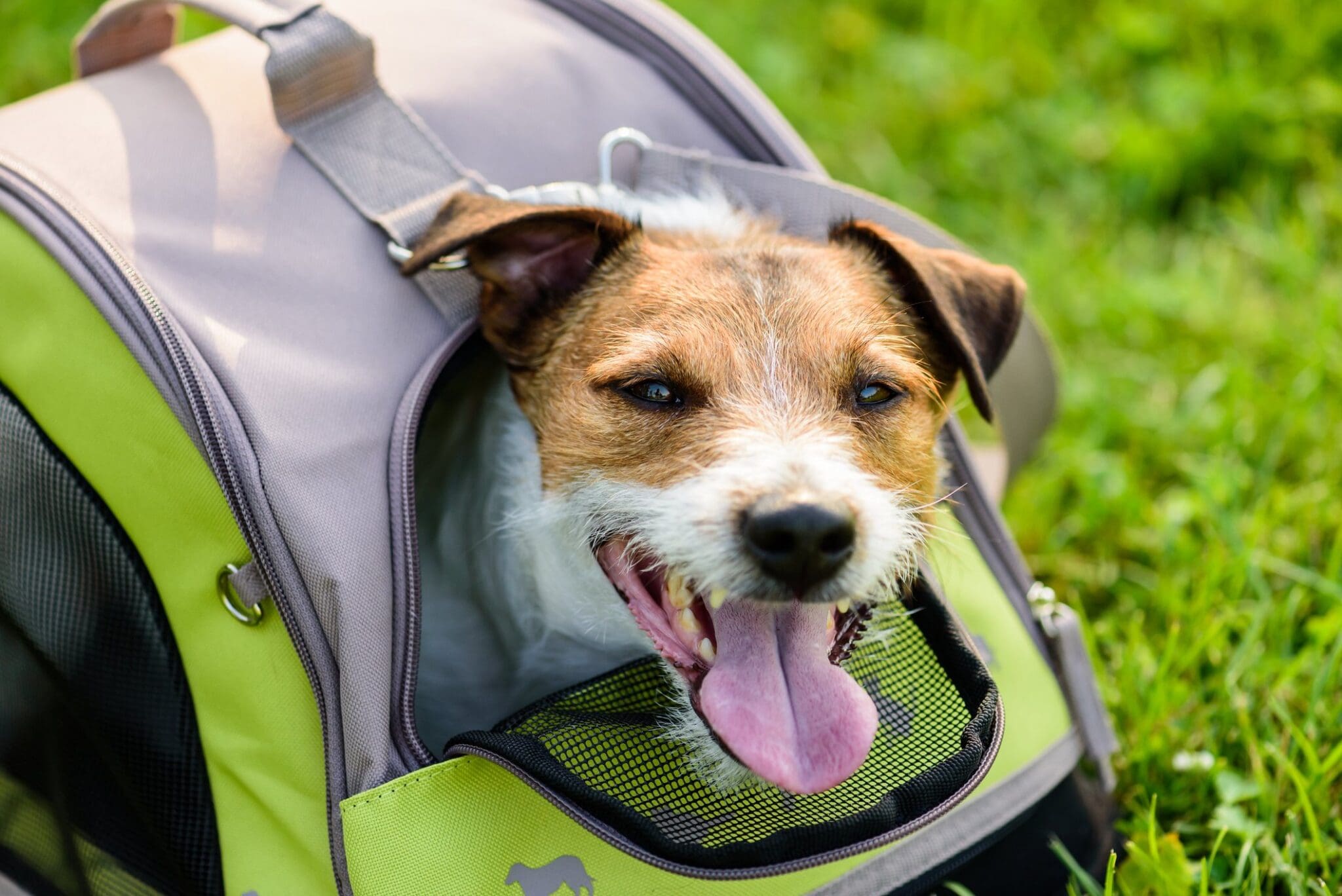
Dreamstime_m_101466439
Crate training your dog comes with ample benefits for the both of you, so let’s review the several varieties of dog crates on the market, and what each crate is best suited for!
5 Types of Dog Crates:
1. Plastic Portable Dog Carriers
Plastic dog crates like these are generally used for small to medium-sized dogs. They are typically made entirely of thick plastic, have a front-facing swinging door and a carrying handle on the top. This type of crate is helpful for dogs who are on the go with their owners. Portable and sturdy, these crates are good for car and plane travel. If you’re flying with your dog and you know he’ll need to go in the cargo hold, a strong-walled crate like this will offer the most protection.
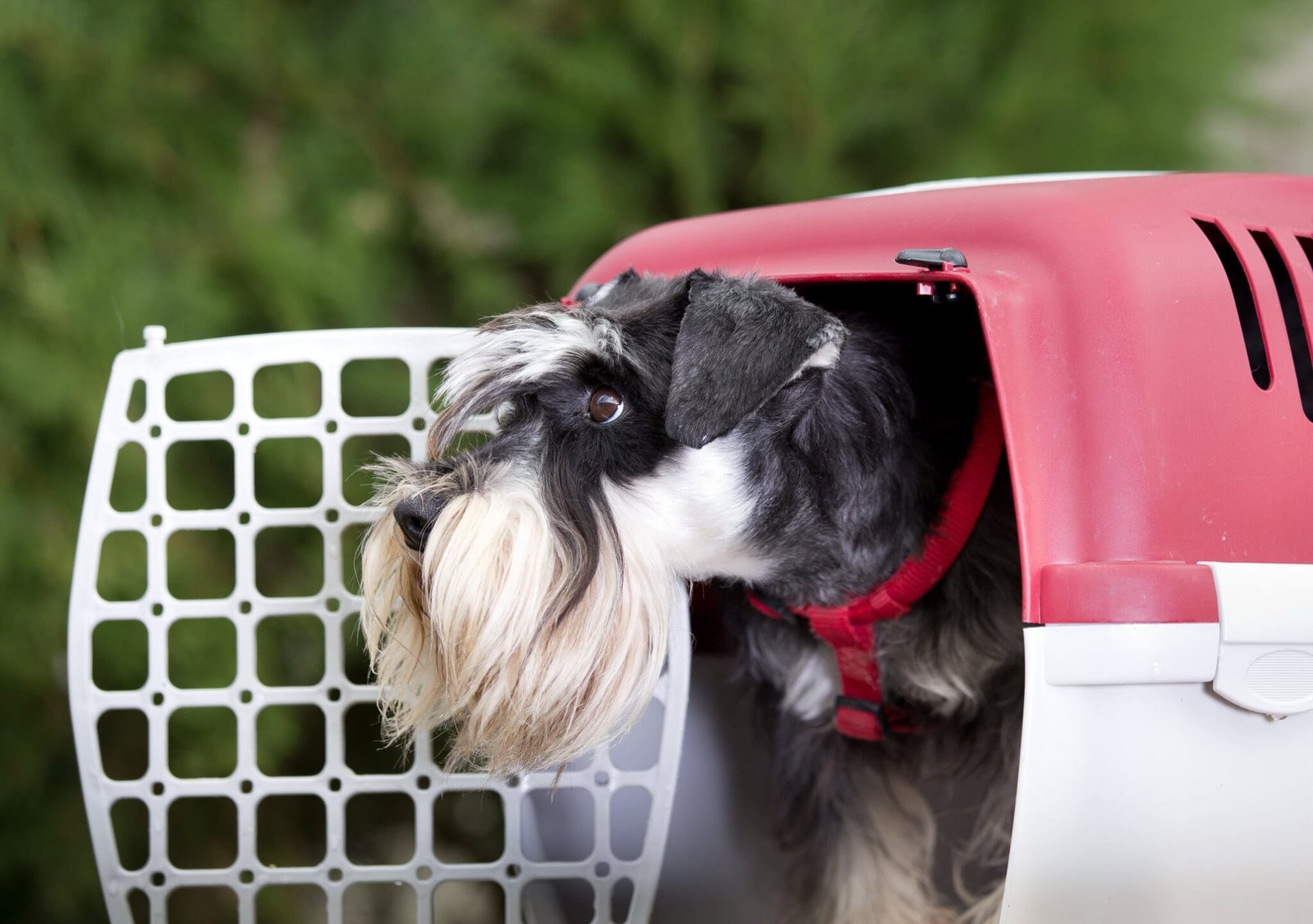
Dreamstime_m_80554230
2. Folding Wire Dog Crates
Here is the ubiquitous dog kennel – the wire crate. Most are folding, so you can easily move them around the house or into the car. The upsides of these crates are that they come in all sizes, your dog has unrestricted view of the house from within, and they are easily cleaned. Putting a cushion or thick blanket down on the metal bottom tray makes it comfortable for your dog. A common issue with these crates is often they are too big for the dogs that use them. A roomy crate might just be big enough for your dog to eliminate on one end and curl up for bed on the other, foiling your housetraining initiatives.
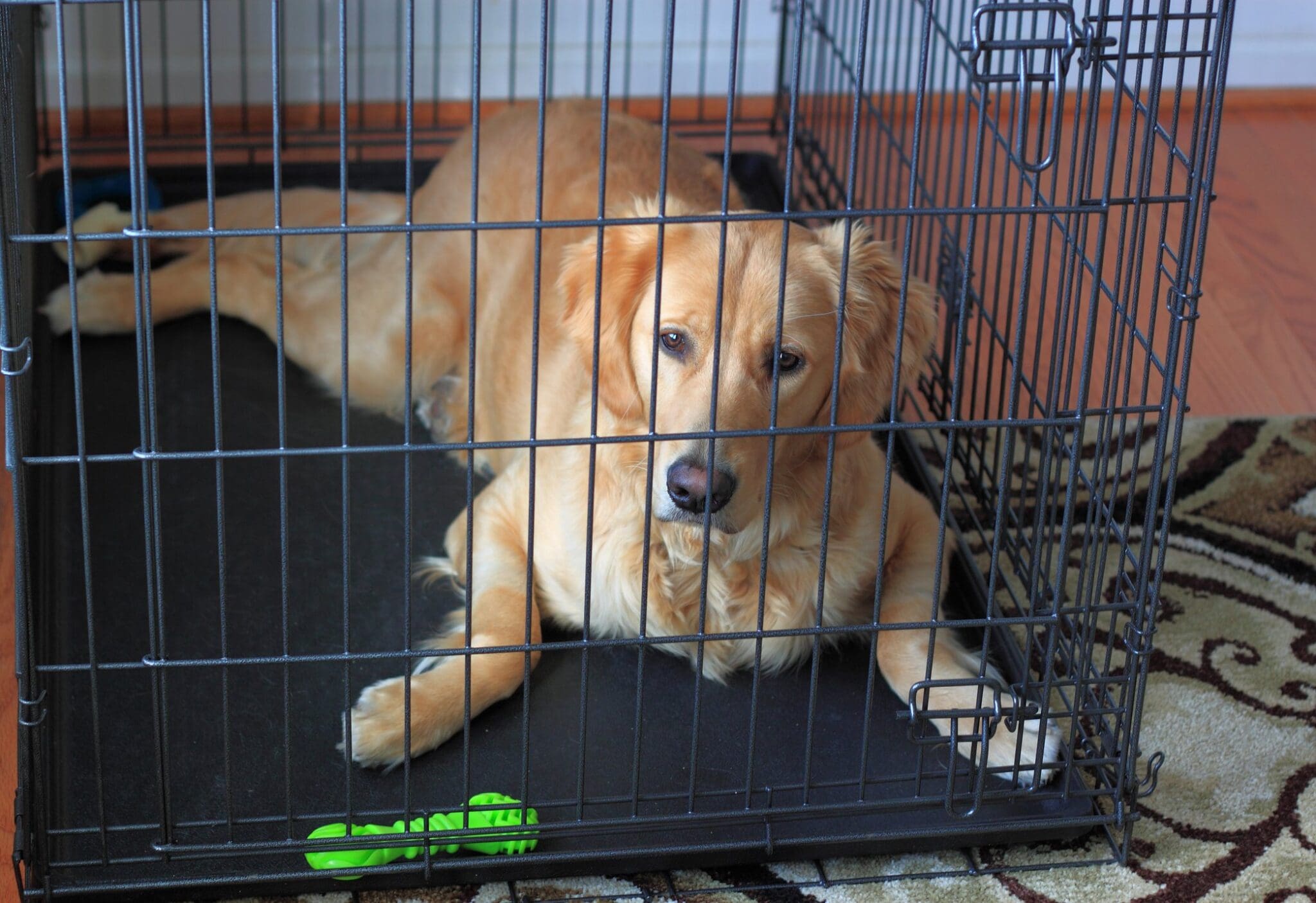
Dreamstime_m_29490509
3. Soft-Sided Dog Crates
This type of dog kennel isn’t for every dog. They are usually made of canvas or nylon, and are therefore more destructible than wire or plastic crates. Dogs who like to scratch or chew at their confines are not good candidates for a soft crate; in general, WDJ doesn’t recommend soft crates for initial crate training. For already crate-trained or exceptionally calm dogs, a soft kennel is a comfortable, lightweight travel option for dogs of any size. WDJ reviewed the best soft-sided dog crates on the market– check it out to see if they’re right for your dog.
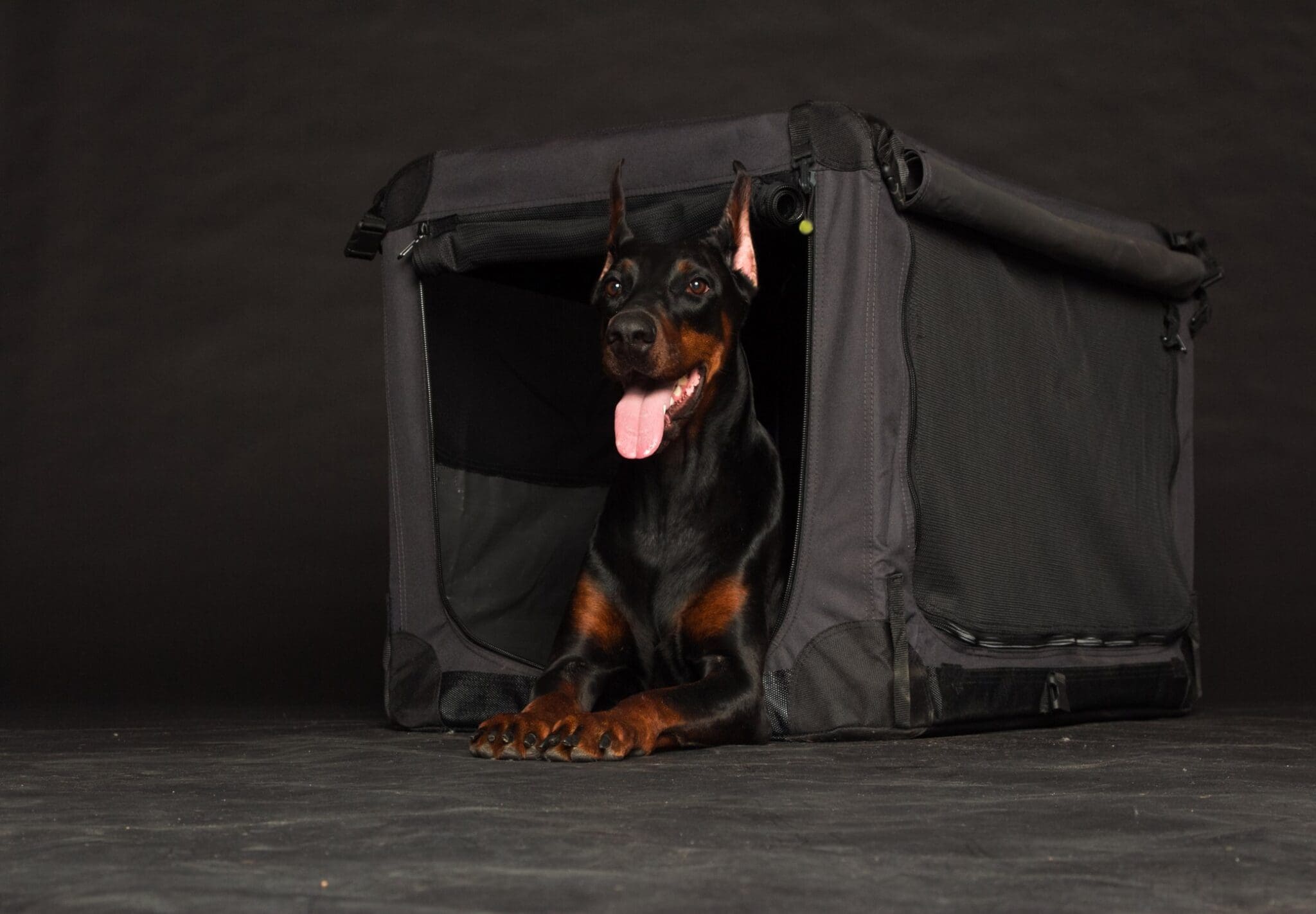
Dreamstime_m_35420340
4. Heavy-Duty Dog Crates
Whole Dog Journal does not see an immediate purpose for a “heavy duty” dog kennel, unless of course you need to crate the Hulk. This type of crate is commonly marketed for giant breed dogs, dogs who destroy their crates, or for master kennel escape artists. If this is the only kind of crate you’ve found that is large enough for your enormous dog, fine. If you think a heavy-duty crate is the right solution for a dog with crate anxiety – a dog who relentlessly chews the crate and tries to escape, who can’t hunker down and relax in confinement no matter what – you need to take a few steps back. Remember: the point of a crate is not to be a prison, but a havenfor your dog. If you need maximum security just to keep your dog inside a crate, your dog is not reaping the training benefits a crate is supposed to provide. Instead, some negative behaviors like house soiling may even worsen as the dog’s stress compounds.
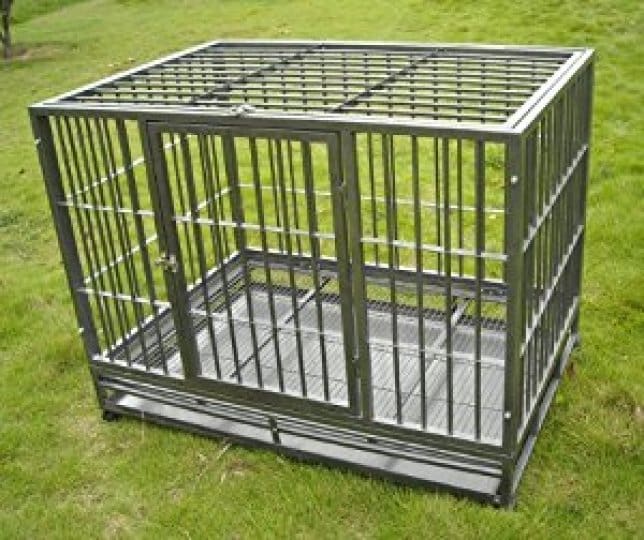
Amazon.com/BestPet Professional
5. Furniture Dog Crates (sometimes called Fashion Crates)
This kind of crate is exactly what it sounds like: a dog kennel that doubles as home furniture. The most typical example of this crate is in the form of an end table or credenza. WDJ does not recommend these crates for dog training. They are not portable or easily cleanable, but they are quite expensive. Yes, they look nice in the living room, but unless your dog is accustomed to sleeping in cabinets, we don’t recognize this type of dog kennel as an effective training tool.

Hayneedle.com/Boomer & George Trenton
Do Dogs Like Kennels? Why Should You Crate Train?
The age-old theory is that dogs, having evolved to be “den” animals who seek the security of small, enclosed spaces to sleep and hide, will avoid pooping or peeing inside the crate because that would defy an instinct to keep their den clean. Dogs find comfort in having a crate of their own – when they have a positive association with the crate, it becomes a place to retreat when the house environment gets overwhelming, or when they want to sleep unbothered by housemates. Naturally, dogs are motivated not to eliminate in their own space. For this reason, you can avoid accidents in the house overnight by crate training your dog.
Dog crates are NOT supposed to be used as punishment! Dragging the dog into his crate whenever he misbehaves will not only encourage your dog to consider the crate as a prison and explore ways to escape it, but will also ruin your dog’s chances of using the crate in its intended way: as a place to relax.
It’s true: some dogs hate the crate. Encouraging guardians to crate a dog who is clearly stressed by it would be irresponsible on WDJ’s part. There are alternatives you can try if your dog dislikes being crated. You can also probably rebuild a more positive association with the crate through careful, calculated conditioning. Even for grown dogs who’ve had a long-time aversion to the crate can be reconditioned to tolerate it.
In summary, the best kind of crate to use to train your dog depends on your lifestyle and intentions. Do you need a dog crate that pops up and breaks down easily for relocation, or something sturdy for frequent car rides? Invest in a properly sized wire crate. Need a carrier for your small dog that he can feel extra safe in? The hard-sided plastic crates are your best bet.






Most of my dogs ..all rescue have been already trained.
I may be getting a puppy so am starting house training 101 anew.
I really like your articles.